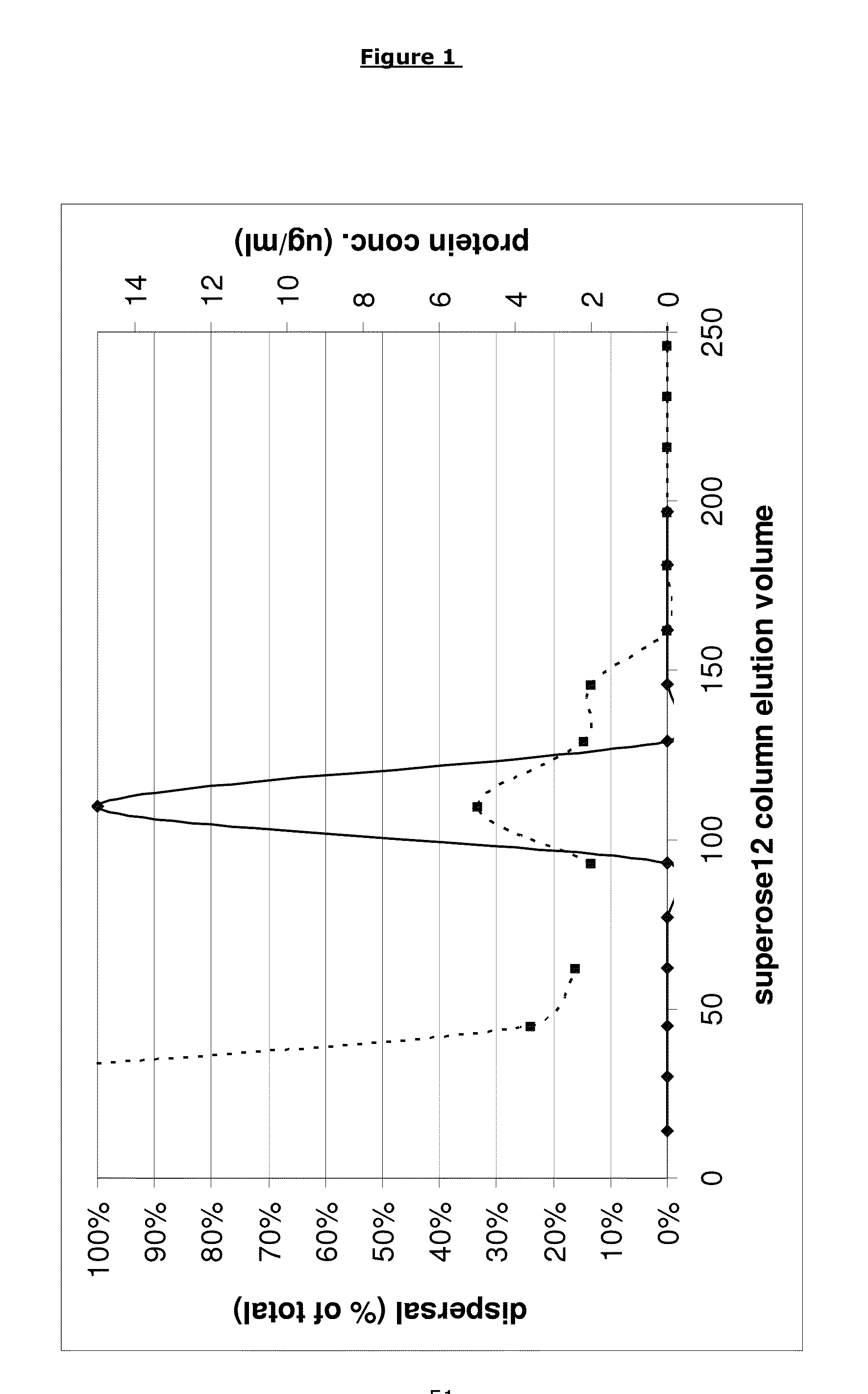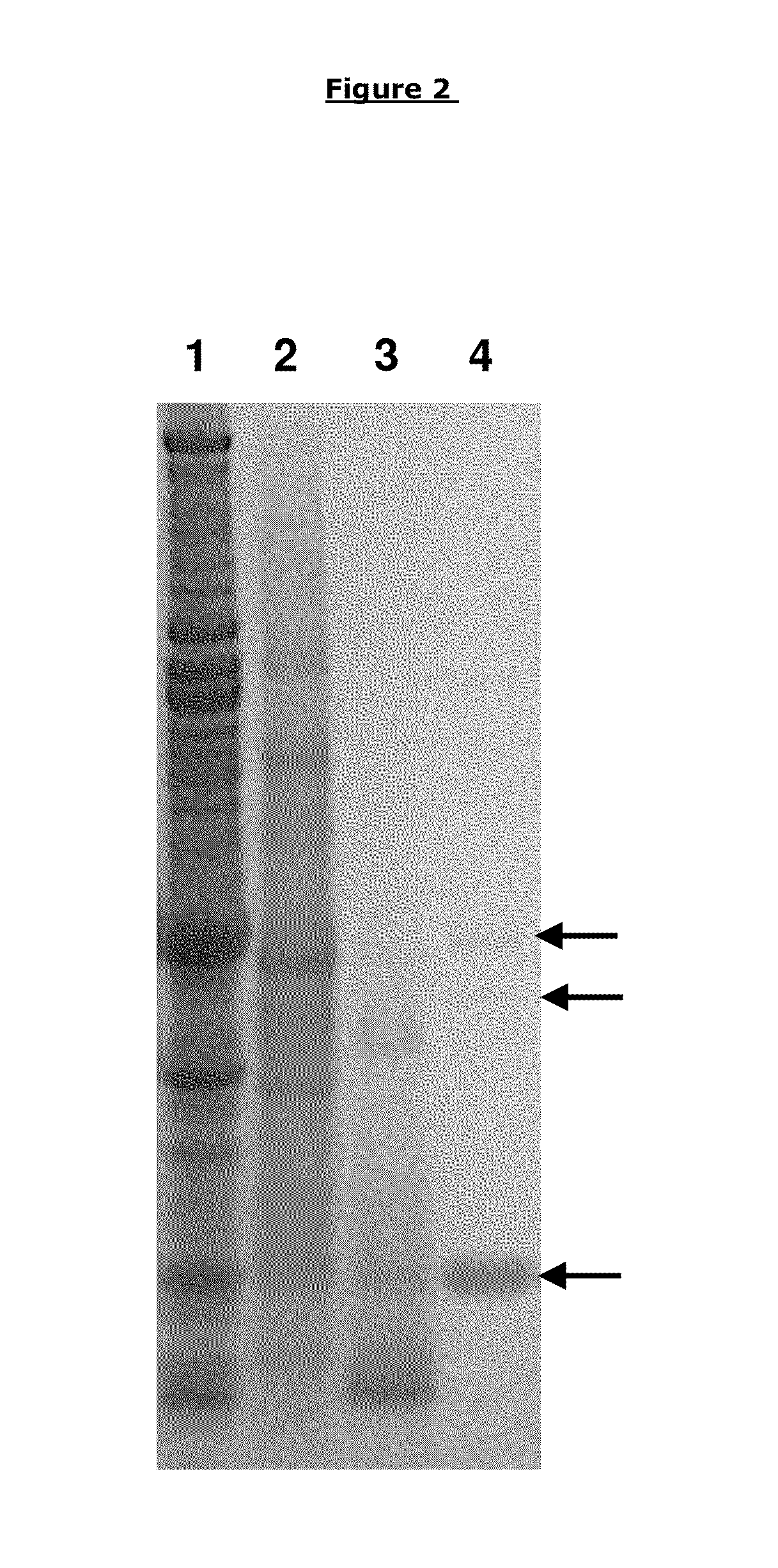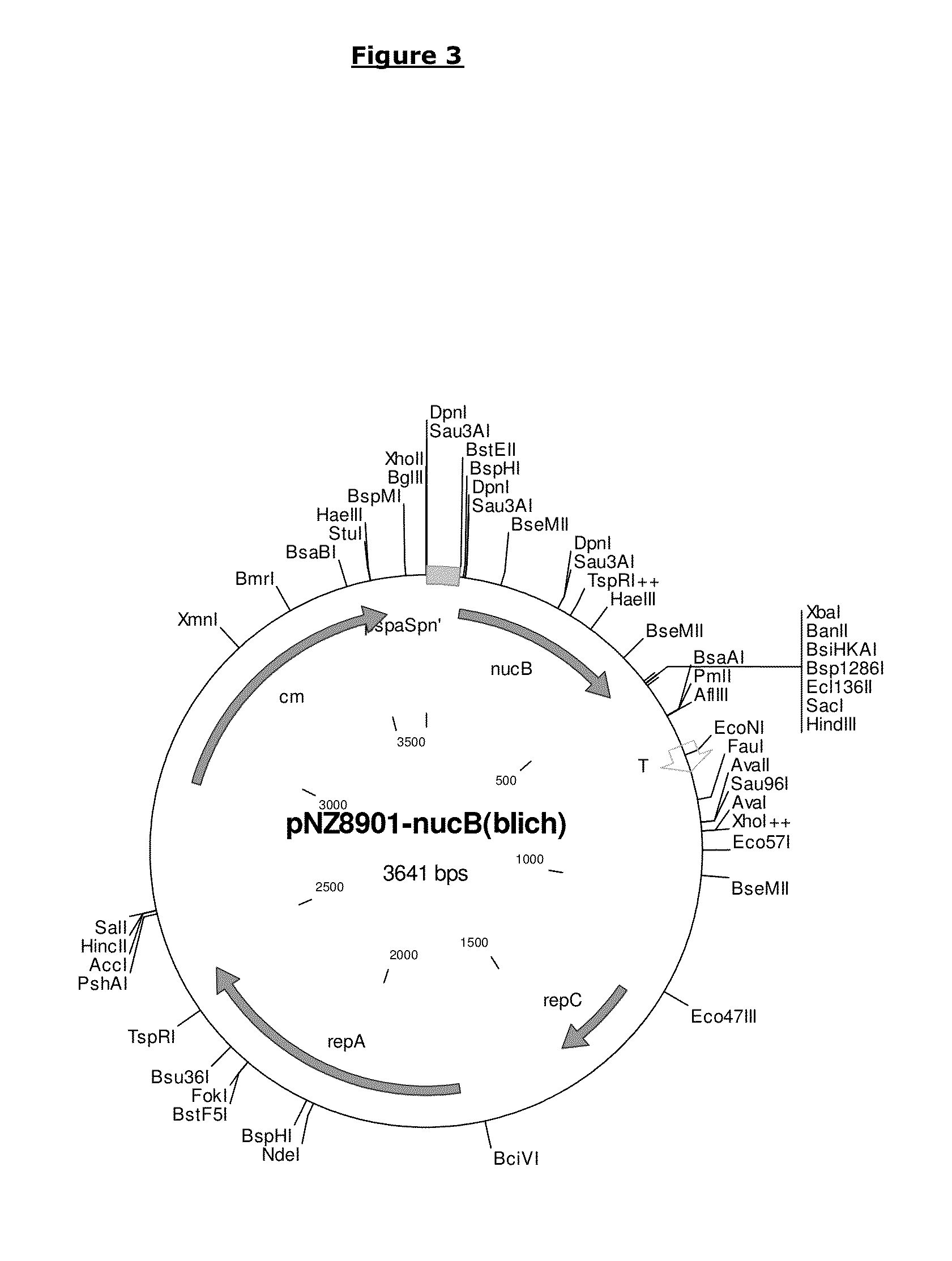Compounds and methods for biofilm disruption and prevention
a biofilm and compound technology, applied in the direction of antibacterial agents, catheters, antibacterial ingredients, etc., can solve the problems of biofilm removal in medical contexts, affecting the health of patients, and affecting the effect of biofilm formation
- Summary
- Abstract
- Description
- Claims
- Application Information
AI Technical Summary
Benefits of technology
Problems solved by technology
Method used
Image
Examples
example 1
Screening for Biofilm Disruption Activity Aided by Bioassay-Guided Fractionation
[0171]Supernatant fractions having biofilm disruption activity were identified as described below.
[0172]B. licheniformis strain EI-34-6 was grown for 7 days in an AMS bioreactor as described previously (Yan et al. 2003. Applied and Environmental Microbiology 69: 3719-3727) in NGF medium (Nutrient broth (Oxoid) 13 g / l, 1% glycerol, 1 mM FeCl2). The growth medium underneath the filter membrane was collected, centrifuged at 7800 rpm for 10 minutes and filtered using a 0.25 μM syringe filter to ensure sterility.
[0173]The proteins in the resulting sterile filtrate (AMS supernatant) were concentrated 50 fold upon precipitation with TCA (Sigma, UK) as follows. 100% TCA solution was added to a final concentration of 15% and the mixture was kept on ice for 30 minutes before spinning down the precipitated proteins for 10 minutes at 7800 rpm in 50 ml Falcon tubes. The pellets were washed twice using ice cold 96% et...
example 2
Identification of Specific Proteins in a Biofilm Disrupting Fraction by Peptide Mass Fingerprinting
[0180]After the fractionation, purification and bioassay steps noted above, three proteins bands were identified on the gel corresponding to the active fraction as described in more detail below.
[0181]The fraction from the Superose 12® (GE Healthcare Life Sciences) gel filtration having biofilm disruption activity was concentrated 10× upon TCA precipitation as described previously (Nijland R, Lindner C, van Hartskamp M, Hamoen L W, Kuipers. OP 2007. 3 Biotechnol. 127(3): 361-72.) and separated on a 4-12% Tris-Tricine gel using MES buffer (Invitrogen, UK). A Novex Sharp Prestained protein standard (Invitrogen, UK) was also loaded to determine protein size. After electrophoresis, the gel was stained using Biosafe Coomassie (Biorad, UK) according to the manufacturer's protocol. Three bands were visible on the gel, 1 abundant band at 12 kD and two higher bands around 30 and 36 kD (see FIG....
example 3
Cloning and Over Expression of B. licheniformis NucB in Bacillus subtilis NZ8900
[0189]Primers were designed to amplify the NucB nuclease gene based on the published genome sequence of B. licheniformis DSM13 (ATCC14580) (Rey et al. 2004. Genome Biology, 5 (10)).
[0190]Primers were designed to amplify the nucB gene from the chromosomal DNA of Bacillus licheniformis EI-34-6 based on the sequence known for strain DSM13 (GenBank: AE017333.1) (See Table 1 below).
[0191]The nucB gene was successfully amplified from B. licheniformis EI-34-6 chromosomal DNA and cloned into the SURE expression vector pNZ8901 (see FIG. 3) using E. coli as intermediate host as described below.
[0192]The reaction to amplify nucB did not yield a single band, but a faint band was present at the correct size. This band was isolated from the agarose gel (Invitrogen gel isolation kit) and used as a template for a new PCR.
[0193]The amplified gene was digested using Eco91I, XbaI (nucB) and ligated into a likewise digested...
PUM
| Property | Measurement | Unit |
|---|---|---|
| Fraction | aaaaa | aaaaa |
| Composition | aaaaa | aaaaa |
Abstract
Description
Claims
Application Information
 Login to View More
Login to View More - R&D
- Intellectual Property
- Life Sciences
- Materials
- Tech Scout
- Unparalleled Data Quality
- Higher Quality Content
- 60% Fewer Hallucinations
Browse by: Latest US Patents, China's latest patents, Technical Efficacy Thesaurus, Application Domain, Technology Topic, Popular Technical Reports.
© 2025 PatSnap. All rights reserved.Legal|Privacy policy|Modern Slavery Act Transparency Statement|Sitemap|About US| Contact US: help@patsnap.com



